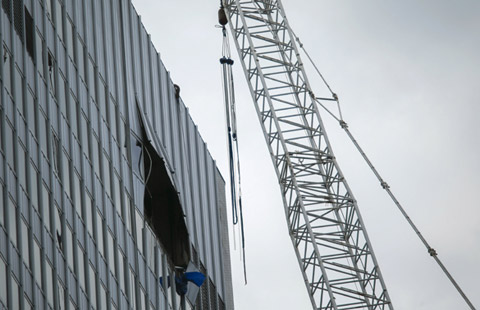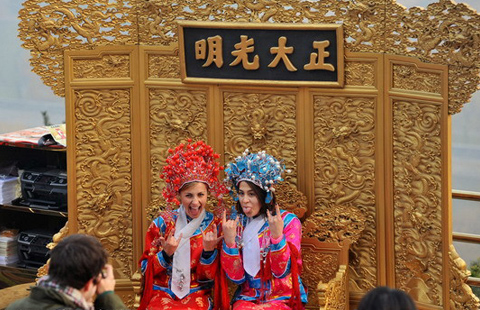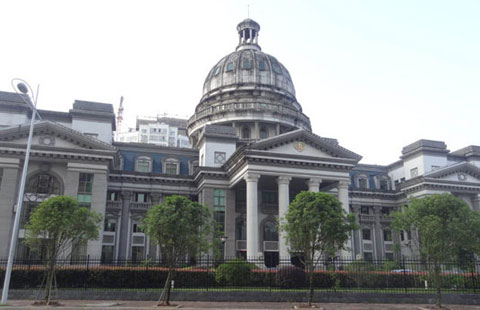Li's trip a watershed in China-Latin America ties
Updated: 2015-06-01 05:21
By Eric Farnsworth and Kezia McKeague(China Daily)
|
||||||||
Premier Li Keqiang's late-May travel to four nations in South America may prove to be a watershed in Chinese relations with Latin America, although the most difficult part lies ahead. The trip generated significant announcements of economic and technical cooperation.
With continental commodities exports suffering from declining Chinese demand, the premier brought with him promises for an ambitious raft of investment deals and loans emphasizing infrastructure development.
Yet even as China's growing commitment to sustained economic engagement with Latin America is apparent, in the final analysis, success of this new phase in relations will be judged in part on whether the announced projects are fully realized.
Li spent more than a week visiting Brazil, Colombia, Peru and Chile, which together account for 57 percent of China's trade with Latin America. The trip followed another multicountry visit by President Xi Jinping just one year ago, when he made stops in Brazil, Venezuela, Argentina and Cuba.
In January, Xi hosted a meeting in Beijing with the Community of Latin American and Caribbean States (CELAC), pledging to invest some $250 billion across a range of industries in the region over the next decade, and also agreeing to provide additional economic support for Ecuador and Venezuela. Separately, he also met with the president of Argentina.
Premier Li's trip, prioritizing the business friendly economies of the Pacific Rim, was the first since the CELAC meeting and consistent with commitments made by Xi.
In Brazil, Li signed a total of 35 contracts and agreements while promising some $53 billion in investment, according to Brazil President Dilma Rousseff. Agreements included the peaceful uses of space, energy cooperation and joint research activities, among others.
The headline project of the trip was announced in Lima — a feasibility study for a transcontinental railroad connecting Peru's Pacific coast with Brazil's Atlantic coast, a plan of breathtaking scope that would provide a new and important outlet on the Pacific for Brazil's exports to China and vice versa. Additional announcements were made in Bogota and Santiago.
It was no surprise that the region's governments should welcome Chinese infrastructure investment, helping to balance out the existing asymmetrical trading relationship whereby South America sends primary commodities to China and receives manufactured goods in return. Li was at pains to show regional benefits, suggesting that, in addition to gaining from necessary infrastructure improvements, regional industrialization is a principal aim of China's development finance.
He also noted Chinese sensitivity to concerns that construction jobs that are created go predominantly to local labor rather than imported Chinese workers. Brazilian officials reinforced these comments, claiming that a second wave of more balanced Chinese economic engagement has now begun.
Ironically, slowdown in China may in fact be contributing to the desire to invest and not simply import commodities. Chinese construction companies are increasingly interested in opportunities overseas as internal demand slows for roads and railways.
They have excess capacity and extra capital, whereas Latin America has underinvested in infrastructure for many years. The potential for cooperation is obvious, but successful implementation will be the key.
Brazil's press has noted, for example, the number of unfulfilled promises in recent years of Chinese investment, contributing to skepticism that projects like the proposed trans-Andean railroad will come to fruition, particularly given significant engineering and environmental challenges among other concerns.
Reinforcing this impression, little was heard this time in Bogota of the so-called “dry canal” across Colombia that was announced with great fanfare in 2011, but seems now to have been abandoned.
Li's travel to South America is clearly another step toward building China's economic and political profile in Latin America. Commitments have been made. But for the trip to be truly transformative, observers will now be watching with interest to see what practical, concrete progress occurs.
Eric Farnsworth is vice president and Washington office head of the Council of the Americas, and Kezia McKeague is director of government affairs at the council.
- Bridging rural-urban gap in education from start
- Overseas study consultancy offers scholarships to top 5 US universities
- China trying to reach 13 people near MERS patient
- Gaokao countdown begins with incense and prayers
- Children's Day celebrated across China
- Ballet dancers perform at Zhalong National Nature Reserve in China's Qiqihar

 Ten injured in crane accident in Manhattan
Ten injured in crane accident in Manhattan
 Forum trends: Becoming 'a little more Chinese'
Forum trends: Becoming 'a little more Chinese'
 Giraffe survives for five years with zig-zag neck
Giraffe survives for five years with zig-zag neck
 World's 15 most valuable brands of 2015
World's 15 most valuable brands of 2015
 The world in photos: May 25- 31
The world in photos: May 25- 31
 Solar plane departs from China to Hawaii
Solar plane departs from China to Hawaii
 Modeled on the United States Capitol
Modeled on the United States Capitol
 Highlights of National Children's Wear Design Contest
Highlights of National Children's Wear Design Contest
Most Viewed
Editor's Picks

|

|

|

|

|

|
Today's Top News
Chinese soldier gets UN award
Nation's astronauts eager for foreign missions
China committed to upholding peace, stability in South China Sea
Li's trip a watershed in China-Latin America ties
Kerry delays return to US after injury in bicycle crash
Californians turn to Australia to learn how to fight drought
China issues six-point response to US remark on South China Sea issue
Chinese ambassador warns US against escalating situation in S China Sea
US Weekly

|

|






